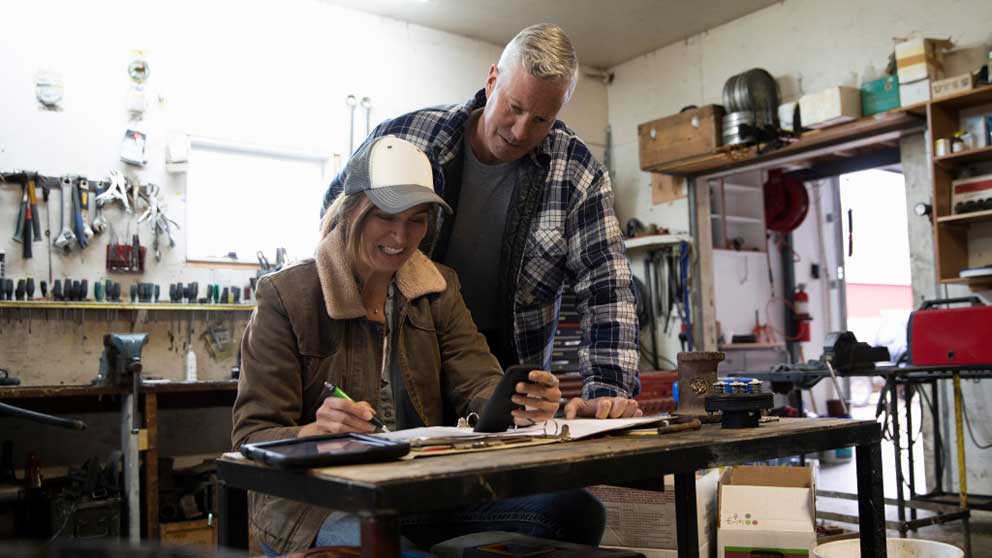Who’s the CTO on your farm?

The business world is great at creating impressive-sounding job acronyms for executive positions. A CEO, or chief executive officer, is the boss. CFO or chief financial officer is the money person and a COO is a chief operating officer, the person who keeps things humming day-to-day and keeps the CEO apprised of how things are going.
It’s an interesting exercise to consider who is filling the most common executive positions in your business. If other successful businesses use these titles to define and assign responsibilities, why wouldn’t farm businesses?
While most farms can identify who might fill the CEO or CFO role, the position of CTO, or chief technology officer, is often overlooked. No major company is without a CTO and it’s one of the first positions filled at a tech start-up company.
The CTO job description
The responsibilities vary depending on the company and nature of their business but tend to include the following tasks:
Develop a technology strategy aligned with the company’s business goals.
Discover and implement new technologies that create a competitive advantage.
Help staff use the technology profitably by cutting costs, boosting productivity or improving efficiency.
Ensure proper use and efficiency creation of new and existing technologies.
Make adjustments based on feedback from staff and clients to improve the use of technology.
Communicate the technology strategy to partners and investors.
Advances in technology will continue to change the way we farm.
We know advances in technology will continue to change the way we farm and live our lives. But does your farm have a strategy for exploring and adopting new technology? Is there a person who is responsible for working with employees to make sure tech is being used optimally?
Whether you formally assign someone to this role or have an informal arrangement within the family, someone needs to be fulfilling the responsibilities of a CTO. It can be as sophisticated as having your full-time CTO create and implement a complete precision farming strategy taking into account seeding, spraying and harvesting equipment, the software required and a data analysis plan. Or it can be as simple as asking your tech-savvy daughter to be responsible for selecting the next smartphone upgrade and reviewing the current mobile data plan.
It’s not realistic for all farms to have a full-time position for a CTO and the same holds true for small or start-up companies outside agriculture. Going from an ad hoc or informal approach to hiring a full-time employee as a CTO is too big a jump. The intermediate step is to hire a technical advisor on an as-needed basis.
Maybe a dairy farmer is considering a move to robotic milkers or a greenhouse grower is looking to upgrade the heating system and water treatment processes. An independent technical advisor can be hired on an hourly basis to ensure all factors are considered in decision-making. A technical advisor can also help producers and staff transition to new technologies smoothly and provide training where required.
Understanding the qualities that make a good CTO or technical advisor helps when hiring or selecting an existing employee or family member to fill the role. Look for:
People eager to learn and understand new things rather than someone who already has all the answers.
A good multi-tasker, with the ability to manage numerous challenges at once is required.
Strong communication skills, which allow the CTO to bring the rest of the team on board. Everyone needs to understand the technology, how it will be utilized, and what the goals are for the operation. Translating tech jargon to layman’s terms is a big part of the job.
A focus on appropriate technology. For example, technology that enables scale and efficiency if the operation is growing. The skills and vision of the CTO must mesh with the direction the farm is taking.
Going through this process with staff and family members is valuable, even on farms with a small team of family or employees. Knowing how everyone feels about existing and new technologies helps build the right process going forward. You may find there is a real tech champion on your team you weren’t aware of. If you’re the CEO on your farm, part of your job is to make sure tasks and responsibilities of a CTO are being fulfilled.
Tips for the new CTO
Here are some suggested first steps when taking responsibility for the technology strategy for your employer:
Interview all staff and management to get a feel for the culture of the company. Is there a positive or negative attitude towards innovation and leading-edge technology?
Assess success by asking what the team thinks is working or not working with the technology already in place. Discuss the wins and losses from past experiences with technology.
Understand the current process for implementing new ideas or technology. Who is involved and how are decisions made? What happens when problems arise?
Be open to questions and suggestions from the team relating to technology.
Build a technology strategy using all the information gathered.
From an AgriSuccess article by Peter Gredig.

Crafting a process together can be the ticket to smooth operations when many people and factors are at play.
